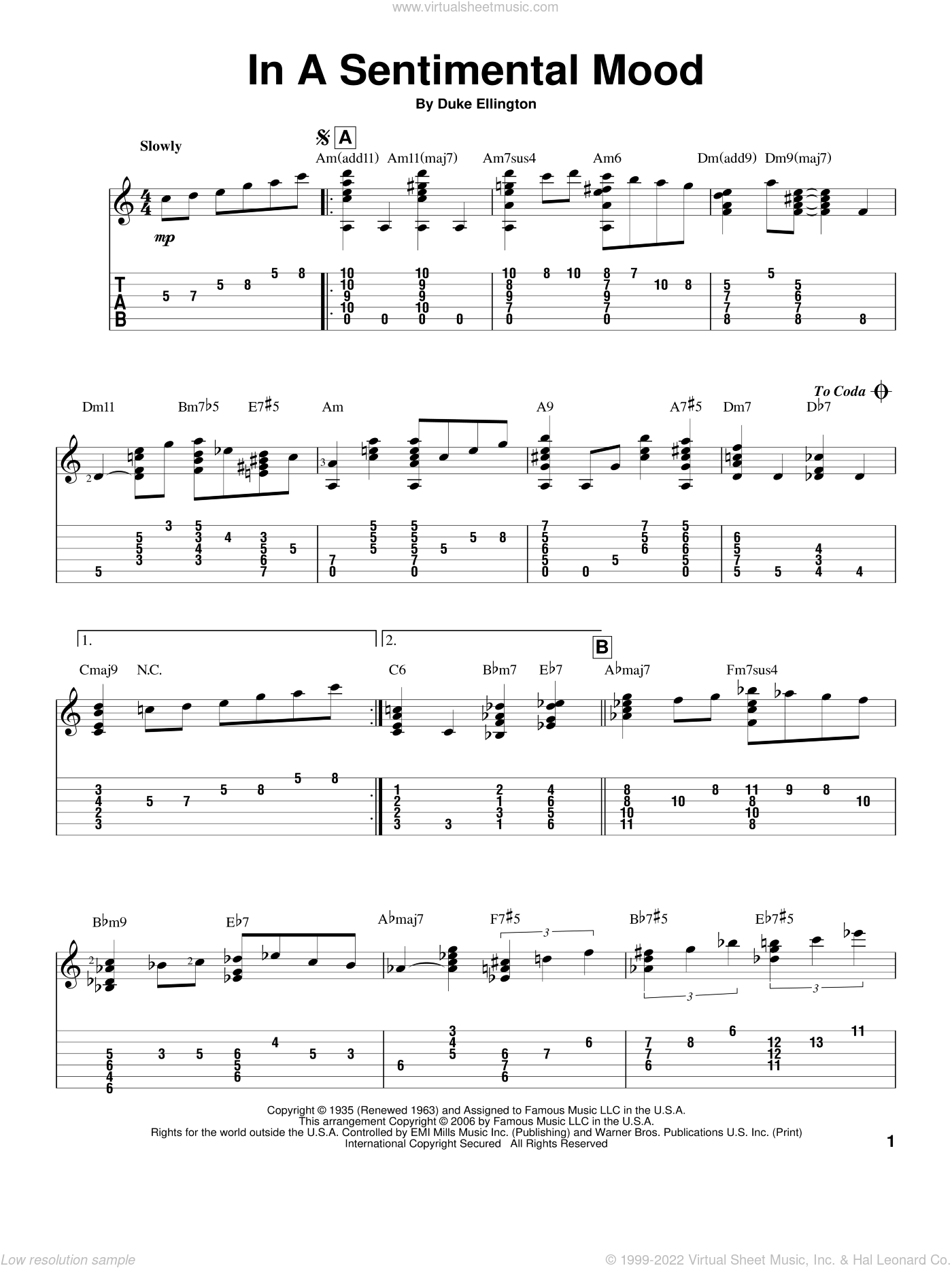- In Sentimental Mood Sheet Music For Flute
- In A Sentimental Mood Piano Sheet Music Free
- In A Sentimental Mood Sheet Music John Coltrane
Official sheet music for 'In A Sentimental Mood' (Duke Ellington) for piano - PDF download, instant print & online streaming - ♪ audio samples (video) ♫ Key: F Major ♬ Category: Jazz & Blues. High quality sheet music for 'In a Sentimental Mood' by Duke Ellington to download in PDF and print. Arranged for Bass and Guitar. In A Sentimental Mood Standard Notation And Tab. Preview in a sentimental mood standard notation and tab is available in 2 pages and compose for advanced difficulty. This music sheet has been read 3668 times and the last read was at 2021-04-30 05:16:40.
Apr 25, 2017 Download and print in PDF or MIDI free sheet music for In A Sentimental Mood by Duke Ellington arranged by Sebastian Carewe for Piano (Solo).
In A Sentimental Mood sheet music for Piano download free in PDF or MIDI
Search all Sheet Music Advanced Search. Instruments Instruments. Wait for the sheet music viewer to load in a few seconds Click Here if it doesn't refresh within 20 seconds. High Quality and Interactive, transposable in any key, play along. NOTE: The sample above is just the first page preview of this item.In a Sentimental Mood - Pascal Wintz version - Jazz Piano Solo
The tune is very accessible and a great standard to start on for beginneror early intermediate students. In a Sentimental Mood contains 2 instances of the minor line cliche — both in the first 8 bars. In part 1 we are going to play through the form with left hand voicings and examine the chords in the form. In part 2 we will then build some 2 handed voicings incorporating extended and altered chord tones. Spend some time to practice the left hand voicings covered in this tutorial so that you are comfortable with the melody and harmony. Then move onto part 2 where we will add some bigger voicings and create a fuller sounding arrangement of the tune. In part 2 of this tutorial, we are going to explore the bridge of the tune and then add some melodic interest for the final A section.
Copyright:
Your download has started. Having troubles downloading? Try again. Follow to get notified when SaxlRose67 has uploaded new scores. Originally written by jazz piano legend, Duke Ellington, 'In A Sentimental Mood' is a slow and beautiful jazz tune featuring a Tenor Saxophone solo originally played by well-known jazz saxophonist, John Coltrane. This arrangement is more simple than the original.
Sign In. This is a 1 page sample. You'll receive all 3 pages after purchase. Your high-resolution PDF file will be ready to download in 7 available keys. Daigle, Lauren.
Sign In. This is a 1 page sample. You'll receive all 3 pages after purchase. Your high-resolution PDF file will be ready to download in 7 available keys. Always Remember Us This Way. A Star Is Born [].
 Grammar with a giggle pdf
Grammar with a giggle pdfIn Sentimental Mood Sheet Music For Flute

book freeIn a Sentimental Mood
In A Sentimental Mood Piano Sheet Music Free
is a jazz composition by the great Duke Ellington. It has been played and recorded by many jazz artists since it was written in 1935 and has become a popular jazz standard as a result. In this article we’re going to examine certain aspects of this tune in a jazz masterclass context. By breaking down the tune we can better understand how to memorize the song, how to improvise over the chord changes, and how to create piano arrangements.In a Sentimental Mood: Understanding the Form
Being able to quickly assess the form of a jazz standard is an important skill. In addition to recognizing the form, it’s a good idea to have a checklist of info that you look for before even going to the piano to play the tune. This checklist includes the following:
- Key signature
- Time signature
- Tempo or metronome mark (if any)
- Form (including repeats or “roadmap” symbols, such as codas or 1st/2nd endings)
In a Sentimental Mood: Tonalities
Notice that the chord changes of the song focuses on 2 tonal centers, meaning that the song moves to two different keys which can temporarily be considered the “I” chord. The first of these tonal centers is D minor (and/or F major). Obviously, D minor and F major are related (relative major and minor) and both occur in the ‘A’ section, so they can be considered as simply one tonal center as opposed to two. The next tonal center is Db major, which occurs during the ‘B’ section. Understanding these two tonal centers can greatly aid you when soloing. Knowing that all of the chords in this song are really coming from just two chord scales (D minor/F major and Db major) can help to simplify your approach to improvisation.